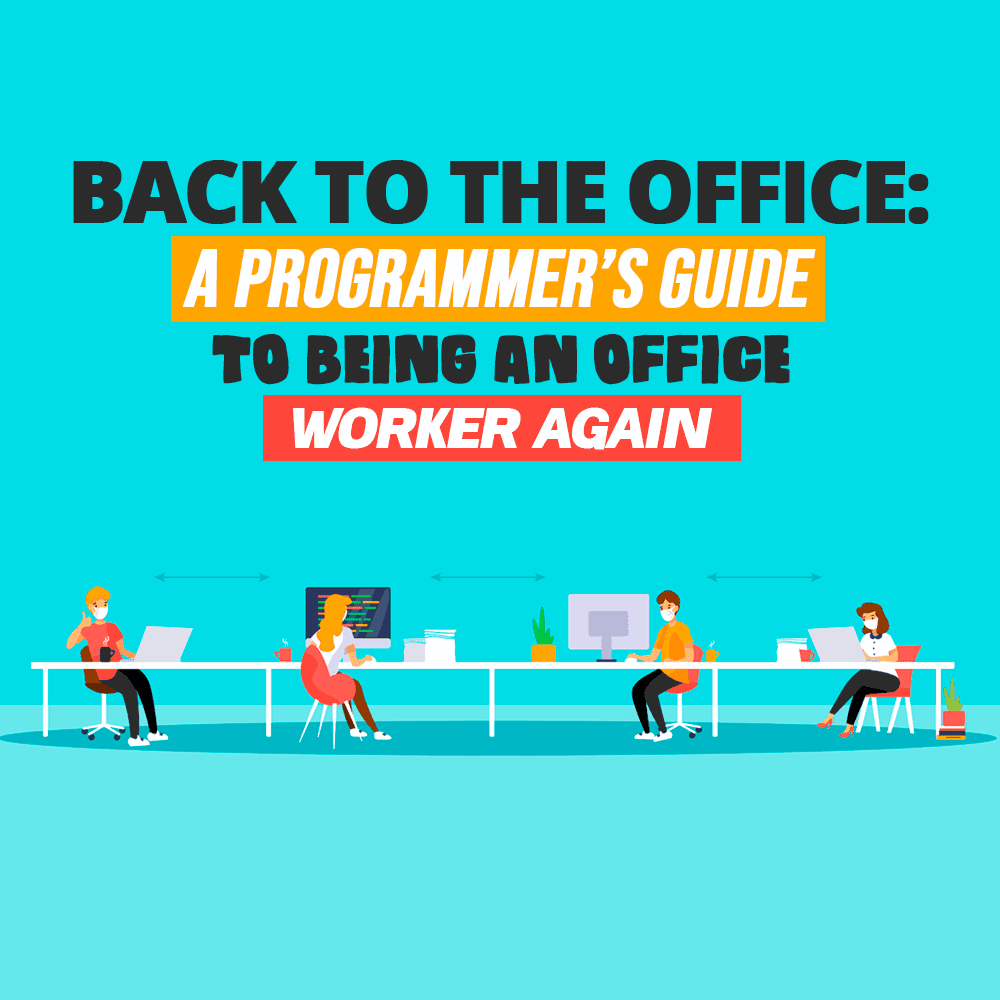
Working from home takes getting used to, and it has various ups and downs. In metropolitan areas, it saves commuting time during rush hour, and when we work from home, we might have fewer distractions—sometimes this can be good, sometimes bad.
You see, distractions can be beneficial. They make office life more real and lively. We get to chat with our co-workers at the water cooler and share ideas or bump into people in the hallway and just say hi. Face-to-face communication is good for innovation and productivity.
On the other hand, when we finished work pre-pandemic, we would just turn off our computer and be done with it. It is not that easy anymore since the workday and home life have merged.
Having all of this in mind, many started craving the office and communication with their teammates. In addition, with the rise in the number of people who received the vaccine for COVID-19, most employers want their employees back in the office.
So whether you’re excited to go back, or you feel a bit nervous about it, here are some tips that will make your life a little easier and safer returning to the office.
Returning to the Office
Whether it will be a month or a year from now, office work will be back in force, and programmers will have high expectations when they do return. Mind you, they are a group of people who can easily function working from home, so they shouldn’t be forced.
Here, we are going to have a look at what to expect returning to the office and how to keep safe in the process. There are several protocols companies are employing for this purpose, and programmers should be aware of them going back to the office.
Phases for Returning to Work
Having in mind the limited seats and desks that are available, companies can opt for a phased return to the office based on people’s roles.
Phased work is really important for people who’ve been working from home for a long period of time and might feel uncomfortable being surrounded by others even after the pandemic. That is why it is important to make the transition as smooth as possible.
It would be helpful to combine teams that usually work together to be physically together in the office at the same time. For example, if the company is preparing to launch a new product, it would be good for the designers and developers to work together in the office.
Another option is to have different groups that would work on different days. For instance, group A might work on Mondays and Wednesdays, while group B could come in and work on Tuesdays and Thursdays.
It is important to keep a physical distance when moving around the office. Adding barriers is also an option. The company Social Bands designed colored-coded bands so that their employees can show how comfortable they feel about getting close to others around the office. Good one, right?
Hybrid Workspaces
If companies want a phased work schedule, it means there will be fewer people in the office. In that case, most companies will try to reduce the rental costs and might realize that they need smaller office space. Since many programmers and developers would work remotely or be flexible, they wouldn’t need to have their own desk at all times.
This is true for the smaller tech companies. However, if you are part of a big company such as Amazon, Google, Apple, or Microsoft, you’d be faced with a different approach, which is opposite to the smaller space idea.
In fact, these companies want most of their workers together at least three days a week to maintain the pace of innovation. The idea is to create a hybrid workplace model: 60% of the developers would work in the office a few days a week, 20% in new office locations, and the rest from home.
Screenings and Rapid COVID Tests
In addition to regular temperature checks, some employers also provide rapid COVID tests. As new variants emerge, concerns continue to circulate, and because many people remain unvaccinated, taking a test before going to work could become the new norm.
Some IT companies claim they will provide their employees with rapid tests that produce results in minutes. In this scenario, it is important to maintain trust in the workplace. For example, Tesla focuses on the need for employees to notify them when they are feeling unwell or they get a positive rapid test. It is all based on trust.
How To Stay Safe
Even though employers can take measures to ensure their employees are safe once they go back to the office, there are additional steps employers can take.
Hygiene
Most companies have issued playbooks that include a checklist of essential cleaning supplies. Ford, for example, has explained that they would clean doors, handrails, lockers, break areas, and so much more. We expect nothing less from IT companies. However, there are still things we can do on our own.
We should keep our hands clean. Wash with soap and water, and use a sanitizer with at least 60% ethanol or ethyl alcohol. Wash when handling money, after using the restroom, when coughing or sneezing. And let’s not touch our eyes, nose, or mouth unless our hands were previously washed.
We should keep our workspace sanitized. The desk, laptop, mouse, and keyboard should be clean at all times.
Before the pandemic, we didn’t think twice before taking a piece of paper off our colleague’s desk to write a quick note. Now, however, it would be better to avoid touching other people’s stuff. If we do have to borrow something, we should disinfect the object first and wash our hands after we’ve used it.
Following the Company’s Guidelines

Moreover, the guidelines should offer an option for flexible or hybrid work conditions, since it would be for the best to avoid peak commute hours and stuffy public transport. Luckily, programmers and developers can work from anywhere, and they can organize their time.
Practicing social distancing and wearing face masks are also recommended. In addition, we should avoid carpooling. Common activities that used to be all fun and games are now better off avoided.
Ventilation
Proper ventilation doesn’t mean that the air should be cold. The ventilation should be a balance between warm whilst keeping the airflow within the area. We can also do our fair share in this section too. Simple things such as a part-open window should do the trick.
Airing the space could facilitate ventilation. A stuffy space can cause poor concentration, and an open window helps to prevent spreading viruses.
Mental Health
The pandemic has left most of us feeling stressed and has caused anxiety. Many might feel that these feelings have continued even after returning to the office. One of the ways we can try and protect ourselves is by making the workspace feel more comfortable and welcoming. We need things in our surroundings that will be soothing in times of stress, such as photos, plants, inspirational quotes, etc.
We should also plan for our breaks. This could be a 15-minute walk, time to listen to a podcast or music, or eating our lunch outside.
Finally, it is OK if we are struggling. Having a hard time going back to the old ways is normal. Try to reach out to a professional. A mental health professional can help us find a way to move forward.
Returning to the Office Can Have Positive Effects
COVID became a huge disruptor in our lives. But it’s important to stay optimistic and hope that this will also bring some positive aspects to the workspace.
After all, this crisis has helped us reinvent and reshape the office and cemented the fact that we are social creatures who want and need to be surrounded by others. Connection matters more than ever, but safety does too. Following these simple tips can greatly help you achieve both.
